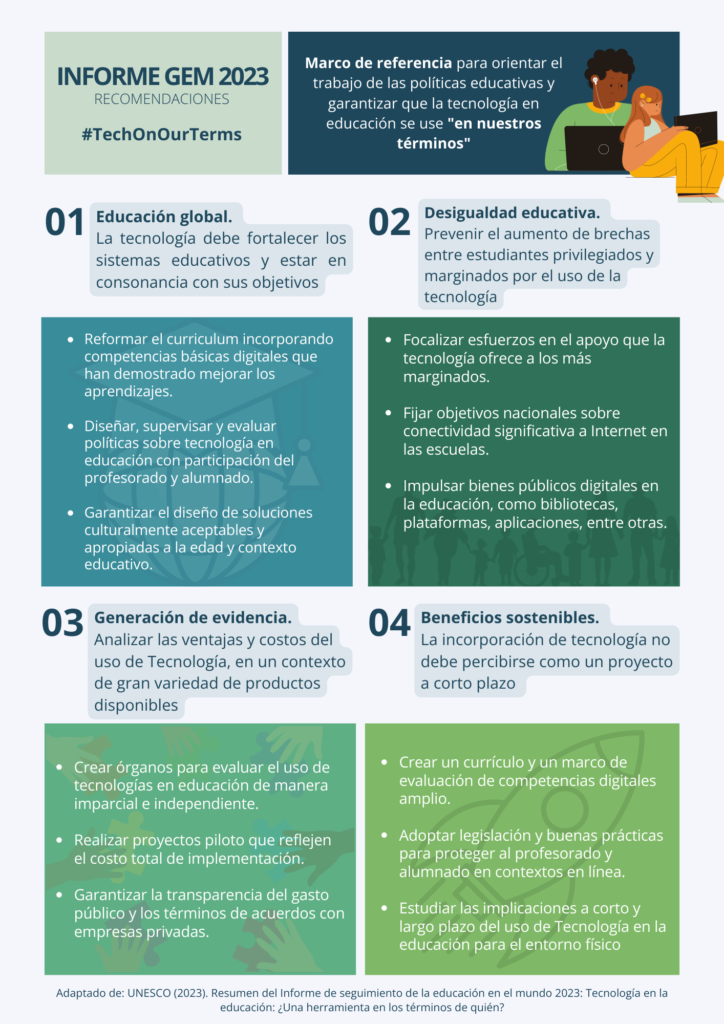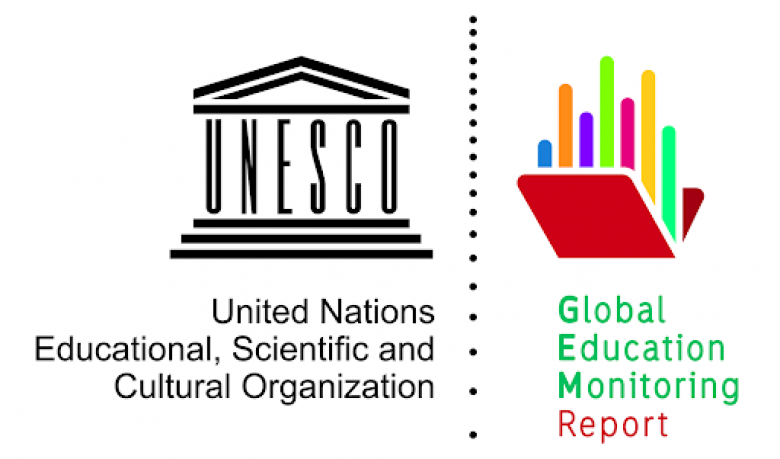A few days ago, the results of the 2023 GEM Report, “Education and technology” were presented with a provocative question about the role of technology in education: a tool on whose terms? The UNESCO report offers a complete analysis of this subject and examines the implications of technology in educational processes, as well as its contribution to the Sustainable Development Goals (SDG 4).
The report emphasises the importance of using technology, not only as a tool at the service of learning, but also as a means at the service of pedagogical interaction between teachers and students. This entails, on the one hand, generating more evidence on the real effects of technologies on learning, and, on the other, critically evaluating the role of the edtech industry in educational systems.
The launch event, held in Montevideo and organised by the Uruguayan Ministry of Education and Culture (MEC) and the Ceibal Foundation in coordination with the UNESCO Office tasked with the report, was attended by several ministers of education, technology and communications, representatives of international and regional organisations and leaders and experts in education from the public and private sectors. It was the first time that a report of this nature was presented in Latin America and in Spanish.
The question that gives the report its title, about who defines the terms of the debate, is followed by others referring to how its use is evaluated, what kind of evidence is used and what solutions technology offers for education. In the words of Audrey Azoulay, the Director-General of UNESCO, “the pandemic was the best illustration of what technology can or can’t do to benefit education. This report puts into perspective the entrenched idea that technology is always good and effective, that it’s a sign of progress”. In this article we’ll see how.

The report emphasises the importance of using technology not only as a tool for learning, but also as a means of pedagogical interaction between teachers and students.
Technology at the service of education, without governing it
The report acknowledges the widespread adoption of digital solutions in educational communities over the past 20 years. Internet users throughout the world actually increased from 16% to 66% between 2005 and 2022, and it’s estimated that around 220 million students had taken part in online courses by 2021. This phenomenon has generated a passionate debate about the role of educational institutions, particularly at higher levels, in the training of the population. Together with the above, the incorporation of digital tools has opened up new opportunities for the management and creation of content and the development of informal learning and data management.
The report highlights that technologies can bring educational content to areas that are difficult to reach or facing emergencies by means of low-tech strategies such as radio communication. It also underlines how technology favours the accessibility and personalisation of content for students with disabilities, as well as its potential to facilitate the creation and adaptation of educational resources through free access tools and the diversification of learning strategies.
However, the study alerts us to some key issues, namely that there’s little evidence of the effects of digital tools on training and improving learning, while the data that are available tend to come from research financed by the developers themselves for chiefly commercial purposes. The rapid technological evolution is hindering their adoption and their consequences have proven to be uneven, which could increase the gaps in learning. Besides, some countries have defined digital skills to be developed based on the guidelines of private agents, without a clear orientation towards the public good. Furthermore, it isn’t entirely clear whether the costs and benefits of incorporating technologies outweigh those of training qualified teachers and promoting quality and inclusive learning environments, or whether the processing of the data compiled by the platforms is used to improve the students’ well-being.
In summary, the report alerts us to the lights and shadows of the integration of technology into education, raising the question of who determines the role of technology within this context. Technology, on whose terms?
A glance at Latin America
Within the framework of the presentation of the 2023 GEM Report, Latin American ministers of education and more than 100 international experts, academics and representatives of civil organisations and the private sector deliberated on how technology has become an educational tool.
In this regard, Pablo da Silveira, the Minister of Education and Culture of Uruguay, highlighted the importance of making informed decisions concerning the use of technology in the fulfilment of educational objectives to prevent risks and errors. Meanwhile, María Brown, the Minister of Education of Ecuador, stressed the need to contextualise the initiatives and improve connectivity in rural areas to promote equality and develop digital citizenships in national plans and policies, ideas shared by other authorities in the region.
Despite the opportunities provided by technology in education, Latin America faces persistent challenges. A study by EdTech Hub on the potential of technologies to mitigate learning loss in a pandemic (2023) highlights systemic inequalities in the systems in the region that affect the adoption of technological solutions and limit access to, use of and participation in learning programmes.
As for the La Voz Docente survey (SUMMA, 2022), it explored the perceptions and teaching practices in the region during the crisis. The results showed that more than half of the teachers consulted regard the technological resources that are available as insufficient and face connectivity problems. Therefore, the GEM’s findings reflect the reality and gaps in Latin America and emphasise the need to redefine the uses of technology to contribute to the improvement of equitable and quality educational opportunities.
The study alerts us to some key issues: there is little evidence on the effects of digital tools on training and learning improvement.
#TechOnOurTerms
The role of technology in education has generated considerable debates over a lengthy period of time. The questions are numerous, the answers are elusive, the research into technology is complex and the evidence is scant. However, one thing is clear: education is key to achieving the sustainable development goals.
As the report states, information and communication technology can contribute to equity and inclusion by reaching disadvantaged learners and imparting knowledge in attractive and affordable formats. However, it can also exclude or be irrelevant and expensive.
The answer to the question that the 2023 GEM Report poses in its title should be: “Technology on our terms”. Because technology in education must be introduced in an appropriate, equitable, scalable and sustainable manner, based on solid evidence that demonstrates its benefits for the students as a complement to in-person interaction with teachers.
In short, the study proposes a critical reflection on technology and its complexities in the educational world and the need to regard it as a supplement and not a replacement for human interaction.







